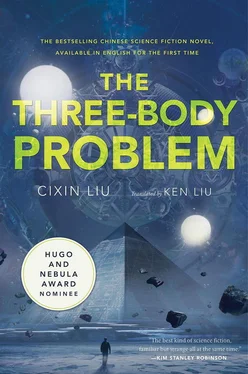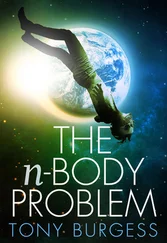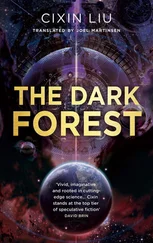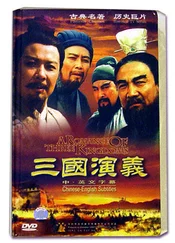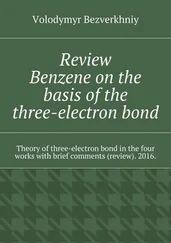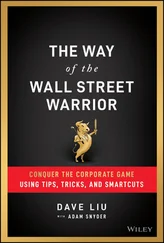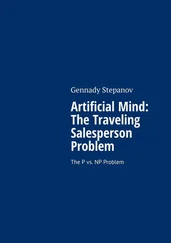Today, Wang felt strange. His photography style tended toward the classical, calm and dignified. But today he could not seem to get in the mood necessary for such compositions. In his mind, the city, as it awoke from its slumber, seemed to be built on quicksand. The stability was illusory. All night long, he had dreamt of those two billiard balls. They flew around a dark space without any pattern, the black one disappearing against the black background and only revealing its existence occasionally when it obscured the white ball.
Can the fundamental nature of matter really be lawlessness? Can the stability and order of the world be but a temporary dynamic equilibrium achieved in a corner of the universe, a short-lived eddy in a chaotic current?
Without realizing it, he found himself at the foot of the newly completed China Central Television building. He stopped at the side of the road and lifted his head to gaze up at this gigantic A-shaped tower, trying to recapture the feeling of stability. His gaze followed the sharp tip of the building, gleaming in the morning sunlight, pointing toward the blue, bottomless depths of the sky. Two words suddenly floated into his consciousness: “shooter” and “farmer.”
When the members of the Frontiers of Science discussed physics, they often used the abbreviation “SF.” They didn’t mean “science fiction,” but the two words “shooter” and “farmer.” This was a reference to two hypotheses, both involving the fundamental nature of the laws of the universe.
In the shooter hypothesis, a good marksman shoots at a target, creating a hole every ten centimeters. Now suppose the surface of the target is inhabited by intelligent, two-dimensional creatures. Their scientists, after observing the universe, discover a great law: “There exists a hole in the universe every ten centimeters.” They have mistaken the result of the marksman’s momentary whim for an unalterable law of the universe.
The farmer hypothesis, on the other hand, has the flavor of a horror story: Every morning on a turkey farm, the farmer comes to feed the turkeys. A scientist turkey, having observed this pattern to hold without change for almost a year, makes the following discovery: “Every morning at eleven, food arrives.” On the morning of Thanksgiving, the scientist announces this law to the other turkeys. But that morning at eleven, food doesn’t arrive; instead, the farmer comes and kills the entire flock.
Wang felt the road beneath his feet shift like quicksand. The A-shaped building seemed to wobble and sway. He quickly brought his gaze back to the street.
* * *
To get rid of the anxiety, Wang forced himself to finish a roll of film. He returned home before lunch. His wife had taken their son out and wouldn’t be back for a while. Usually, Wang would rush to develop the film, but today he wasn’t in the mood. After a quick and simple lunch, he went to take a nap. Because he hadn’t slept well the night before, by the time he woke up it was almost five. Finally remembering the roll of film he had shot, he went into the cramped darkroom he had converted from a closet.
The film developed. Wang began to look through the negatives to see if any shots were worth printing, but he saw something strange in the very first image. The shot was of a small lawn outside a large shopping center. The center of the negative held a line of tiny white marks, which, upon closer examination, turned out to be numbers: 1200:00:00.
The second picture also had numbers: 1199:49:33, as did the third: 1199:40:18.
In fact, every picture in the roll had such numbers, until the thirty-sixth (and last) image: 1194:16:37.
Wang’s first thought was that something was wrong with the film. The camera he had used was a 1988 Leica M2—entirely mechanical, which made it impossible for it to add a date stamp. Given the excellent lens and refined mechanical operation, it was considered a great professional camera even in this digital age.
After reexamining the negatives, Wang discovered another strange thing about the numbers: They seemed to adapt to the background. If the background was black, the numbers were white, and vice versa. The shift seemed designed to maximize the numbers’ contrast for visibility. By the time Wang saw the sixteenth negative, his heart was beating faster, and a chill crept up his spine.
This shot was of a dead tree against an old wall. The wall was mottled, showing a pattern of alternating black and white patches on the negative. Given this background, either white or black numbers would have been hard to read. But in the picture, the numbers arranged themselves vertically to fit along the curve of the tree trunk, allowing the white numbers to show up against the dark coloring of the dead tree like a crawling snake.
Wang began to analyze the mathematical pattern in the numbers. At first he thought it was some kind of assigned numbering, but the difference between the numbers wasn’t constant. He then guessed that the numbers represented time in the form of hours, minutes, and seconds. He took out his shooting diary, in which he recorded the exact time he took each picture down to the minute, and discovered the difference between two successive numbers on the photographs corresponded to the difference in time between when they were taken.
A countdown.
The countdown began with 1,200 hours. And now there were about 1,194 hours left, just under 50 days.
Now? No, at the moment I took the last photograph. Is the countdown still proceeding?
Wang walked out of the darkroom, loaded a new roll of film in the Leica, and began to snap random shots. He even walked onto the balcony for a few outdoor shots. Afterward, he took out the film and went back into the darkroom. In the developed roll, the numbers again appeared on every negative like ghosts. The first one was marked 1187:27:39. The difference matched the passage of time between the last shot of the last roll and the first shot of this roll. After that, the number decreased by three or four seconds in each image: 1187:27:35, 1187:27:31, 1187:27:27, 1187:27:24 … just like the intervals between the quick shots he had taken.
The countdown continued.
Wang again loaded a new roll of film. He snapped off the shots rapidly, even taking a few with the lens cap on. As he took out the roll of film, his wife and son returned. Before he went into the darkroom to develop the film, he loaded another roll of film in the Leica and handed it to his wife. “Here, finish the roll for me.”
“What am I supposed to shoot?” His wife looked at him, amazed. He never allowed anyone to touch his camera, though she and their son had no interest in doing so either. In their eyes, it was a boring antique that cost more than twenty thousand yuan.
“Doesn’t matter. Just shoot whatever you want.” Wang stuffed the camera into her hands and ducked into the darkroom.
“All right. Dou Dou, why don’t I take some pictures of you?” His wife aimed the camera at their son.
Wang’s mind suddenly filled with the imagined sight of the ghostlike figures appearing over his son’s face like a hangman’s noose. He shuddered. “No, don’t do that. Shoot something else.”
The shutter clicked, and his wife had taken her first shot. “Why can’t I press it again?” she asked. Wang taught her how to wind the film to advance it. “Like that. You have to do it after every shot.” Then he ducked back into the darkroom.
“So complicated!” His wife, a doctor, couldn’t understand why anyone would use such expensive but outdated equipment when ten- or even twenty-megapixel digital cameras were common. And he even used black-and-white film.
After the third roll of film developed, Wang held it up against the red light. He saw that the ghostlike countdown continued. The numbers showed up clearly on every randomly shot picture, including the few he had taken with the lens cap on: 1187:19:06, 1187:19:03, 1187:18:59, 1187:18:56 …
Читать дальше
